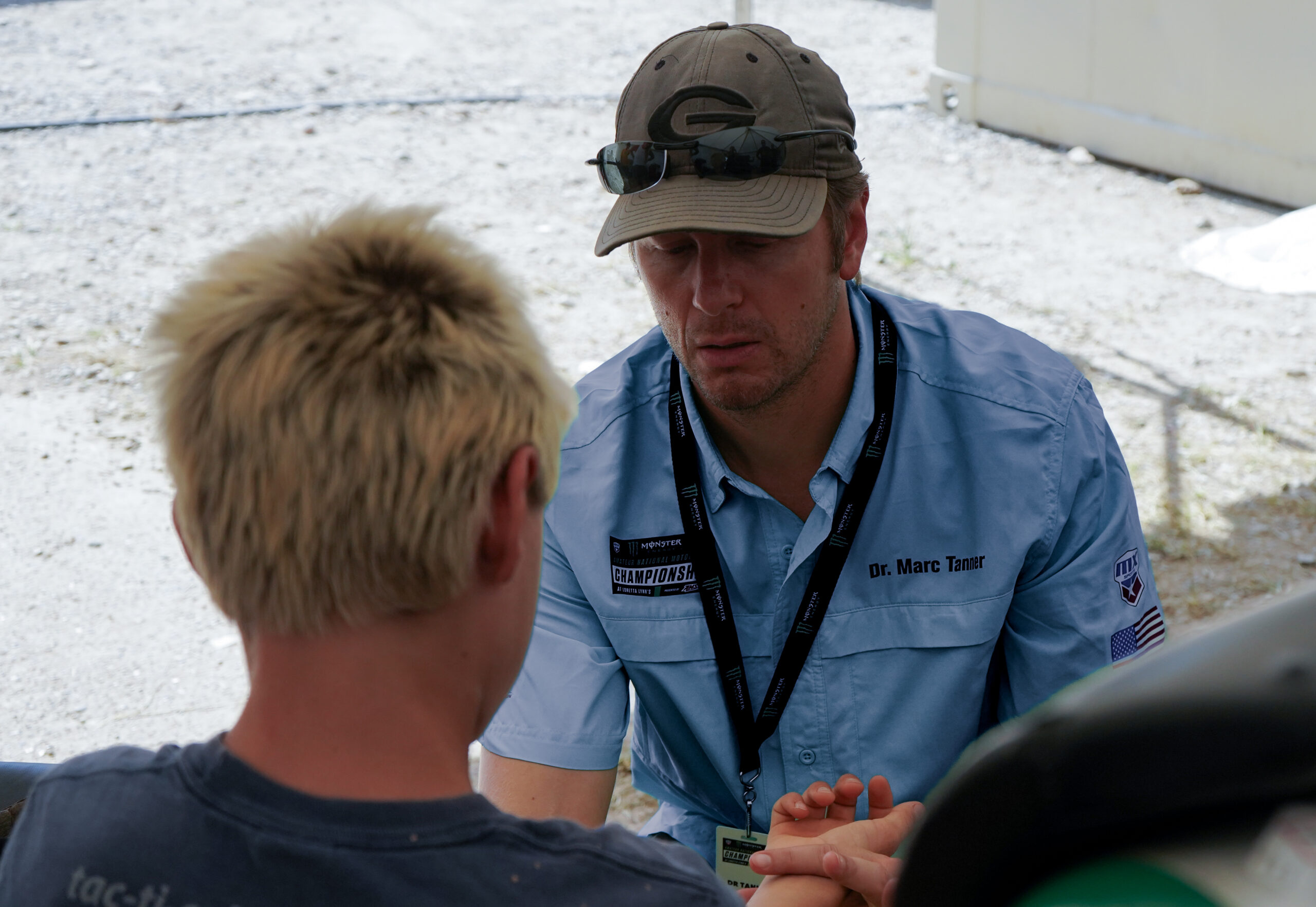The Monster Energy AMA Amateur National Motocross Championship is here, and just like every lap of the motocross event, timing is everything. This is true for both motocross riders and their medical staff. Orthopedic surgeons, emergency physicians, and other sports medicine doctors know all too well how common fractures, dislocations, and joint trauma are in extreme sports — and how much every second counts when assessing the damage and determining a treatment plan.
For this reason, portable X-ray devices such as OXOS’ MC2 are becoming increasingly prevalent at sporting events. Having MC2 trackside means riders can be diagnosed at the scene of the injury, accelerating treatment and helping them avoid unnecessary and costly trips to the ER.
“The portability makes it so easy to take to events all over the country,” said Dr. Marc Tanner of Tanner Orthopaedics. “I keep it in my medical rig and we take it into the medical tent at times – I can take it pretty much anywhere I want.”
Motocross: An Extreme Sport Demands Accessible X-rays
The physical risks in motocross are well-documented. Riders are prone to orthopedic injuries, commonly including fractures, injuries, and dislocations of the clavicle, upper and lower extremities, and shoulders. This is why X-ray imaging is a foundational tool in motocross sports medicine. It’s a fast, effective way to evaluate orthopedic trauma after a crash, helping emergency medical staff determine whether the injury is minor, manageable, or requires a trip to the ER.
But accessibility challenges with traditional X-ray equipment have historically forced motocross physicians to work without it.
The Problem with Traditional X-ray Equipment
X-ray hasn’t been a mainstay at the motocross track until recently because traditional X-ray systems are large, fixed, and immobile. They’re built to operate within the confines of a lead-lined room in a hospital or radiology suite — not for dirt tracks, racing pits, or mobile clinics.
This has had serious ramifications for motocross riders. If an emergency physician suspects orthopedic injury during a race, the athletes must be transported offsite for imaging, which introduces delays, increases costs, and can result in unnecessary ER visits. The athlete spends precious time off the bike which can have a huge impact on their earning potential.
Luckily, Trackside X-rays are Driving Change
(Pun intended.) The MC2 portable X-ray device is designed for point-of-care imaging — wherever and whenever it’s needed. MC2 brings ease-of-use, accessibility, and versatility to radiographic imaging.
MC2 is easy to use. Its simple, intuitive interface and built-in automations allow both experienced medical imaging practitioners and those new to X-ray technologies to easily operate the device. MC2 also includes built-in safeguards such as its patented “no-fire” positioning system which determines the distance and angle from X-ray source to detector. This prevents users from emitting radiation unless the device is properly aligned. And MC2 includes an automatic collimator to limit X-ray beam field size and collimation pucks for additional manual adjustment.
MC2 makes X-rays extremely accessible. The device is battery-powered and has a low radiation profile, alleviating the need for a lead-lined room. MC2 Go bundles the MC2 with a rugged travel case and handheld display tablet, making it the ideal X-ray solution for use at sporting events. It’s compact enough to store in a medical rig and rugged enough to travel. Imaging can happen minutes after a crash, without the delays of hospital transfers.
MC2 is versatile. Despite its compact form factor, the MC2 delivers exceptional image quality. MC2’s small form factor accommodates nontraditional care settings, such as those where motorcycle crash injuries may occur. And because the device is small and wireless, clinicians can easily capture multiple views, which is important for both initial diagnosis and follow-up care.
First-hand Perspective: Dr. Marc Tanner, MD, FAAOS
Dr. Marc Tanner, a sports medicine physician who treats elite extreme sports athletes including motocross riders, has relied on portable X-ray technology from OXOS to deliver the best care to his patients for several years. He appreciates the ability to make better, faster clinical decisions from any location.
“Without it, you’re kind of operating blind… Since getting the portable X-ray device from OXOS, we’ve been able to treat patients with a higher level of care. We can diagnose complex dislocations and treat them onsite, avoiding any ER visits.”
Tanner was an early user of OXOS’ Micro C device and is looking forward to using MC2 at this year’s race.
Learn More About Portable X-ray
For motocross athletes, fast diagnosis can mean the difference between continuing a race or sitting out the season. With MC2, orthopedic and sports medicine providers are better equipped to meet the demands of extreme sports, delivering the speed, precision, and portability needed to treat motorcycle crash injuries at the point of impact.
See how portable X-ray technology can benefit your practice: Schedule your MC2 demo today.
See more information about Dr. Tanner’s motocross mobile care with Safety On Site and Tanner Orthopaedics.
